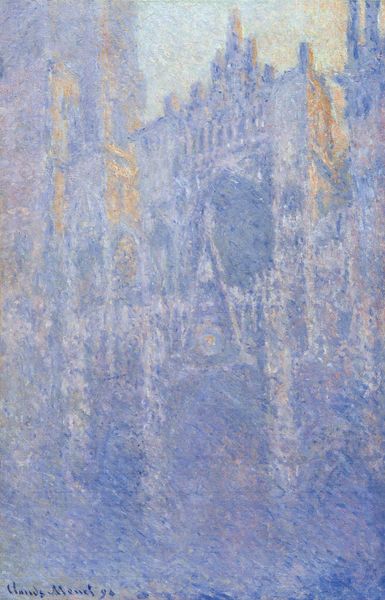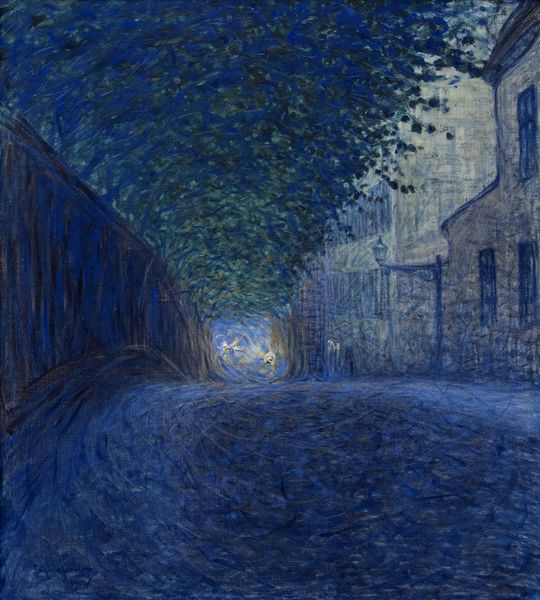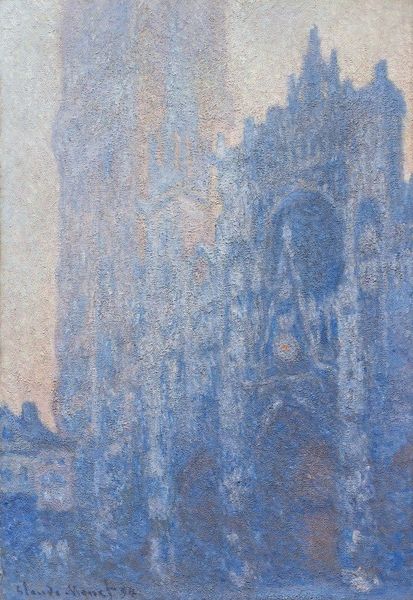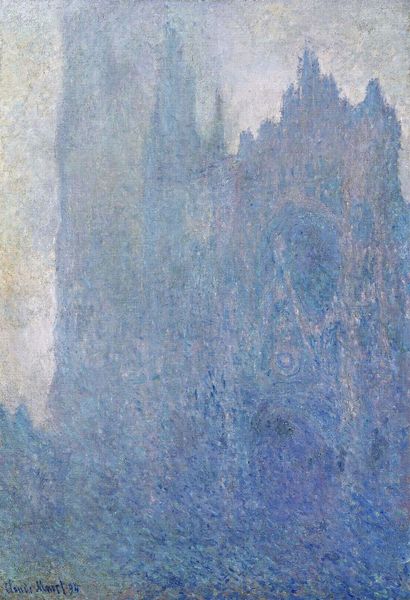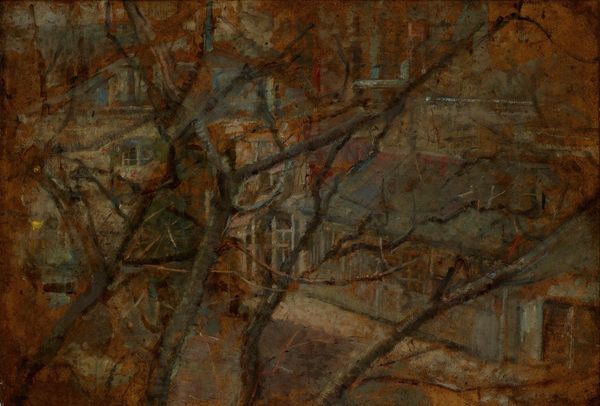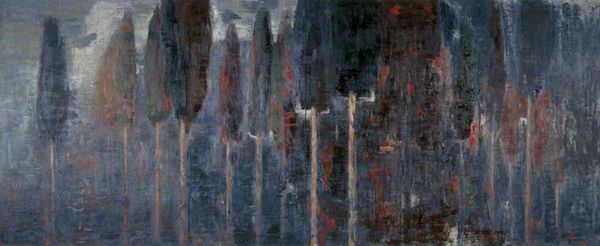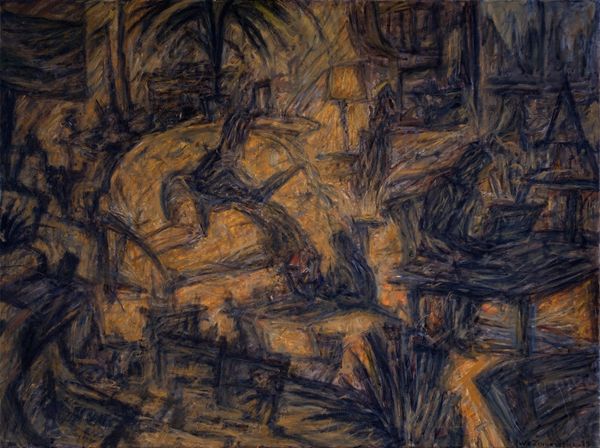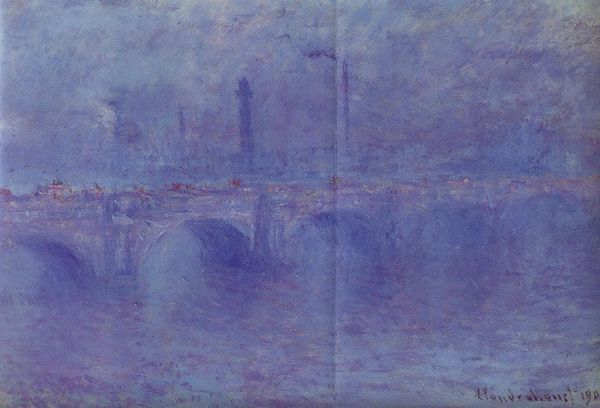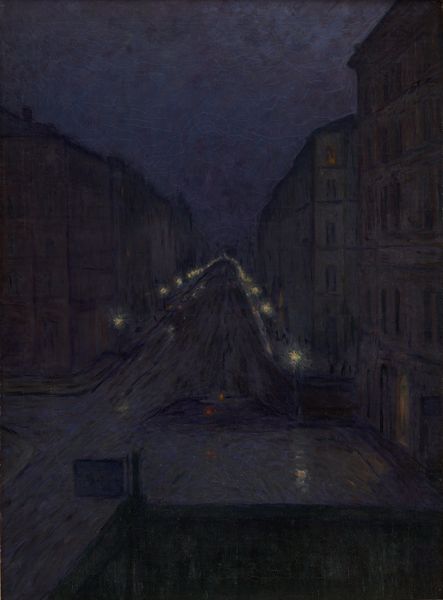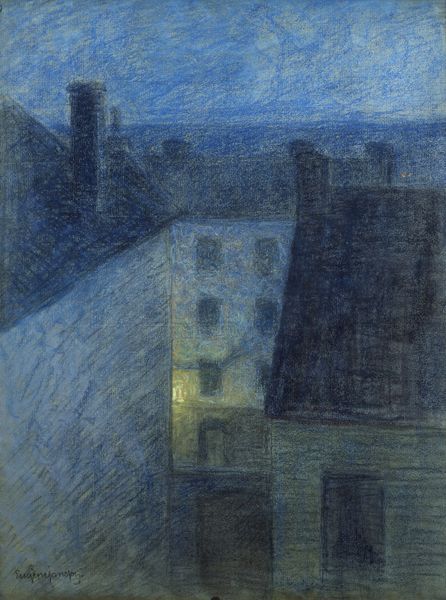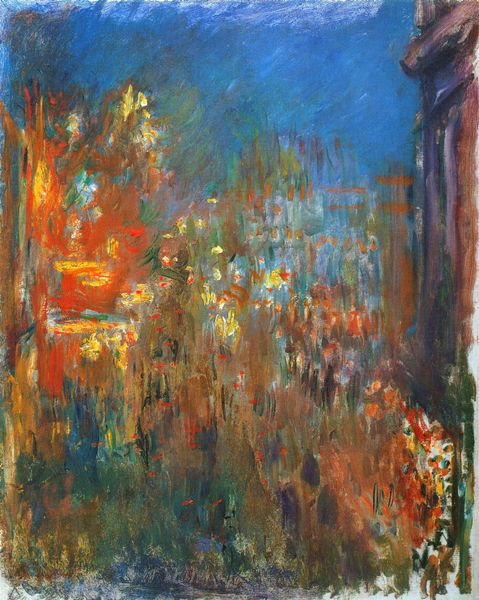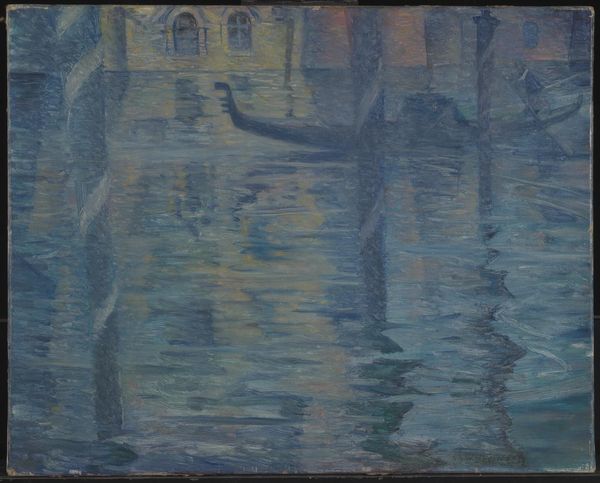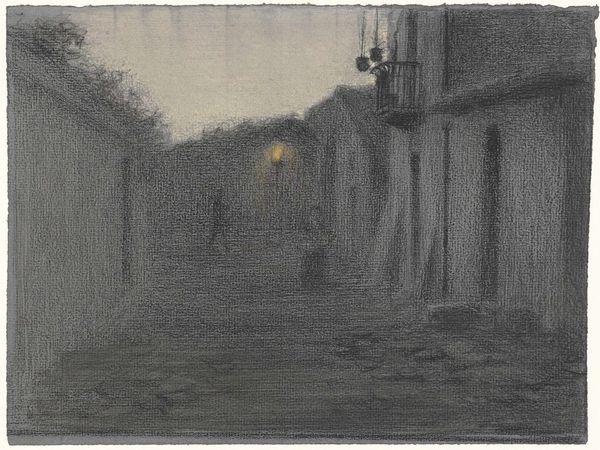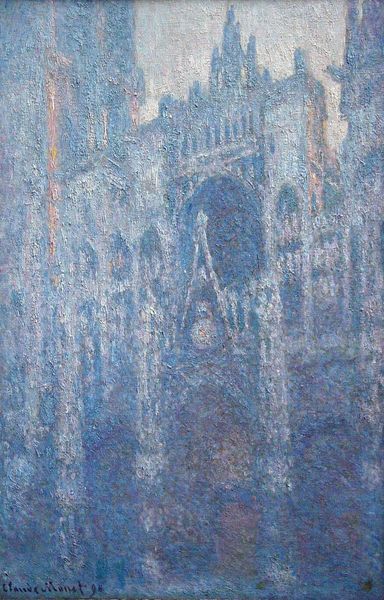
#
abstract expressionism
#
abstract painting
#
impressionist landscape
#
possibly oil pastel
#
oil painting
#
fluid art
#
neo expressionist
#
acrylic on canvas
#
paint stroke
#
expressionist
Copyright: Public domain
Curator: This artwork, titled "Osterlånggatan", was painted by Eugène Jansson in 1904. It's dominated by this mesmerizing blue hue. Editor: The pervasive blue gives it an almost dreamlike quality. The whole piece feels incredibly immersive; I am pulled into the depth of the street. It gives me the chills. Curator: The artist uses visible, expressive brushstrokes to depict a street scene at twilight. Considering the social context, particularly within the queer community in Stockholm at the turn of the century, this streetscape takes on layers of meaning, imbued with coded desires and hidden identities. The liminal space between day and night mirrors the experience of those living on the margins. Editor: Fascinating. Focusing on the materials, notice how Jansson has skillfully used varying tones of blue to render depth and texture. The materiality conveys an atmosphere, a specific weight and density that speaks volumes. The method seems aligned to evoke a certain emotion in the viewer. Curator: Absolutely, and in viewing the materiality in conversation with the era, it is clear that this painting acts as a stage where personal and collective struggles of visibility are negotiated. The use of blue could even symbolize the emotional landscape of a people dealing with societal rejection or a metaphor for forbidden desires. Editor: Also, the layering and scumbling of paint itself mirrors how realities were obscured, made visible through a concerted manual activity with physical implications. Was it a challenge to apply the paints in a fashion that can almost render visibility in the dimness of that scene? What effort must have been applied by the maker? Curator: In light of Jansson’s possible internal and external challenges to his personhood, the artist subtly disrupts dominant narratives by giving form to these emotional truths. It really encourages a reading of marginalized perspectives back into traditional narratives of urban life. Editor: Right. I’m moved by how Jansson's method elevates "Osterlånggatan" beyond mere depiction; it becomes a profound visual document through a careful use of process and medium. Curator: Indeed. It gives new meaning to historical events by weaving a compelling and comprehensive story. Editor: I concur.
Comments
No comments
Be the first to comment and join the conversation on the ultimate creative platform.
